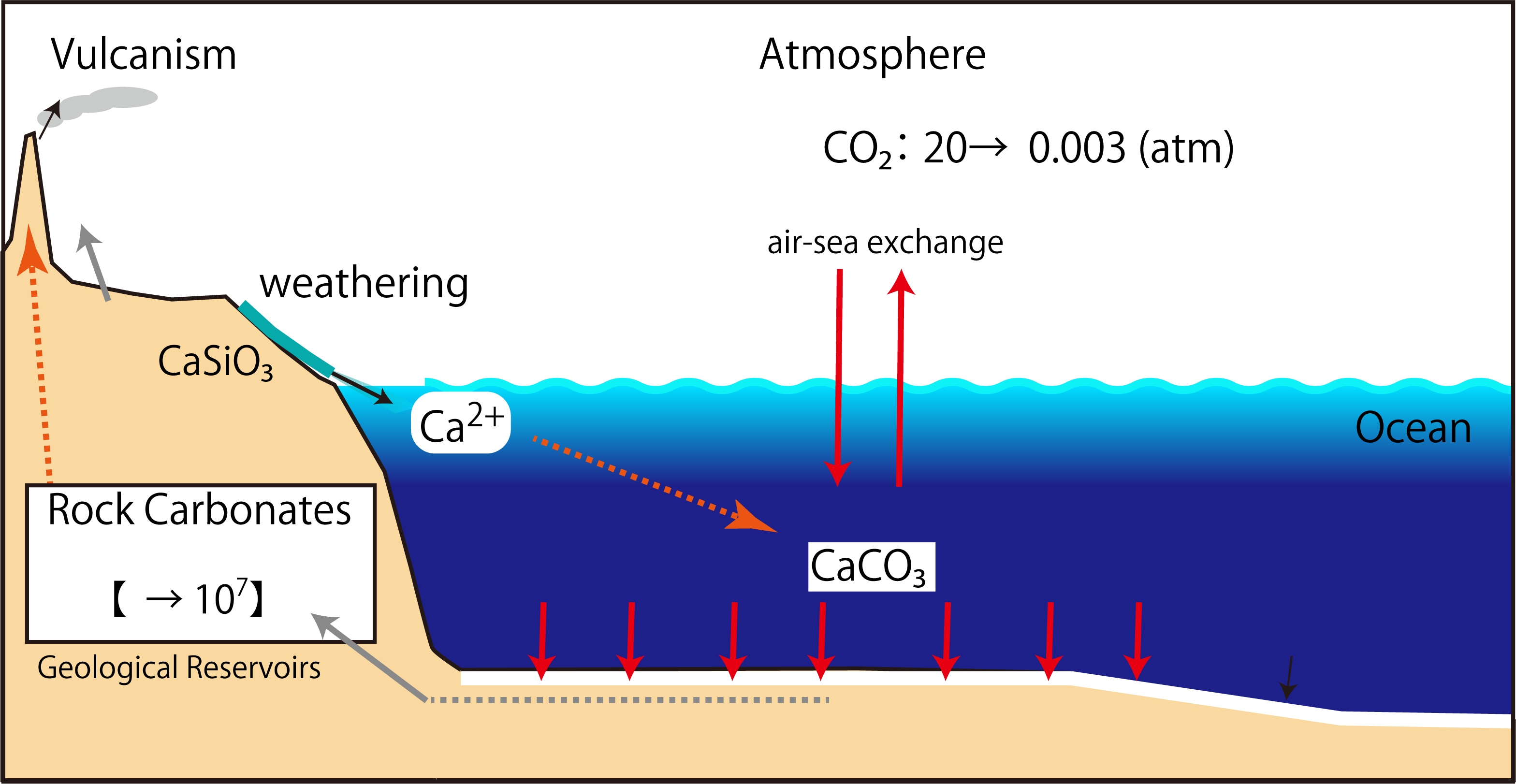After the growth of the continents began (3 billion to 600 million years ago).
Continental growth began 3 billion years ago and has been gradual up to the present. According to a recent study (Sawada et al., 2018), some authors suggest that the continental area reached about 30% of the surface area 3 billion years ago. As continents grow, calcium carbonate from the ocean floor is incorporated into the continental crust.
When basaltic continental crust is exposed at the surface, weathering action rapidly increases the supply of Ca2+ to the oceans. A mechanism was created whereby the oceans absorbed enormous amounts of carbon dioxide, accumulated it as limestone, and sequestered it in the continental crust as the continents grew. Thus, the concentration of atmospheric carbon dioxide is thought to have decreased.

(References for weathering and climate change of igneous rocks such as basalt: Global Climate Change and Weathering in the Phanerozoic, KASHIWAGI, Journal of Geology, (2017): for changes in atmospheric partial pressure of carbon dioxide, read from Figure 2.3 in Evolution of Earth's Surface Environment, KAWAHATA, University of Tokyo Press, (2011). Since there is a large range in the estimated values depending on each report, please understand that this is only to capture a rough trend.)
